Articles Menu

Sept. 26, 2021
On a late August afternoon, under cloudy skies that threatened rain, Gitanyow hereditary chiefs gathered at the Lax An Zok fish camp on the banks of the Meziadin River in northwest B.C. to sign a unilateral declaration.
Provincial representatives were notably absent in the attentive crowd of 200 who gathered to witness Simogyet (Chief) Malii Glen Williams, Simogyet Wii Litswx Gregory Rush Sr. and others declare the immediate protection of 54,000 hectares of land and water in Gitanyow territory, which includes large portions of the Kitwanga and Nass River watersheds and significant sections of the upper Kispiox River, a tributary of the Skeena River.
Williams spoke slowly and carefully, leaving long pauses that made space for the weight of his words to sink in, gaps punctuated by the sounds of kids playing in puddles, the wind in the birch trees and the white noise of the falls on T’aam Mats’iiaadin (Meziadin River).
As The Narwhal recently reported, the Gitanyow have been working with the province to protect the Meziadin watershed for more than four years. The nation has made significant inroads in convincing provincial and federal governments to recognize the authority of Gitanyow governance, reflected in the recent signing of the Gitanyow Governance Accord which charts a five-year path towards legal recognition of the hereditary governance system.
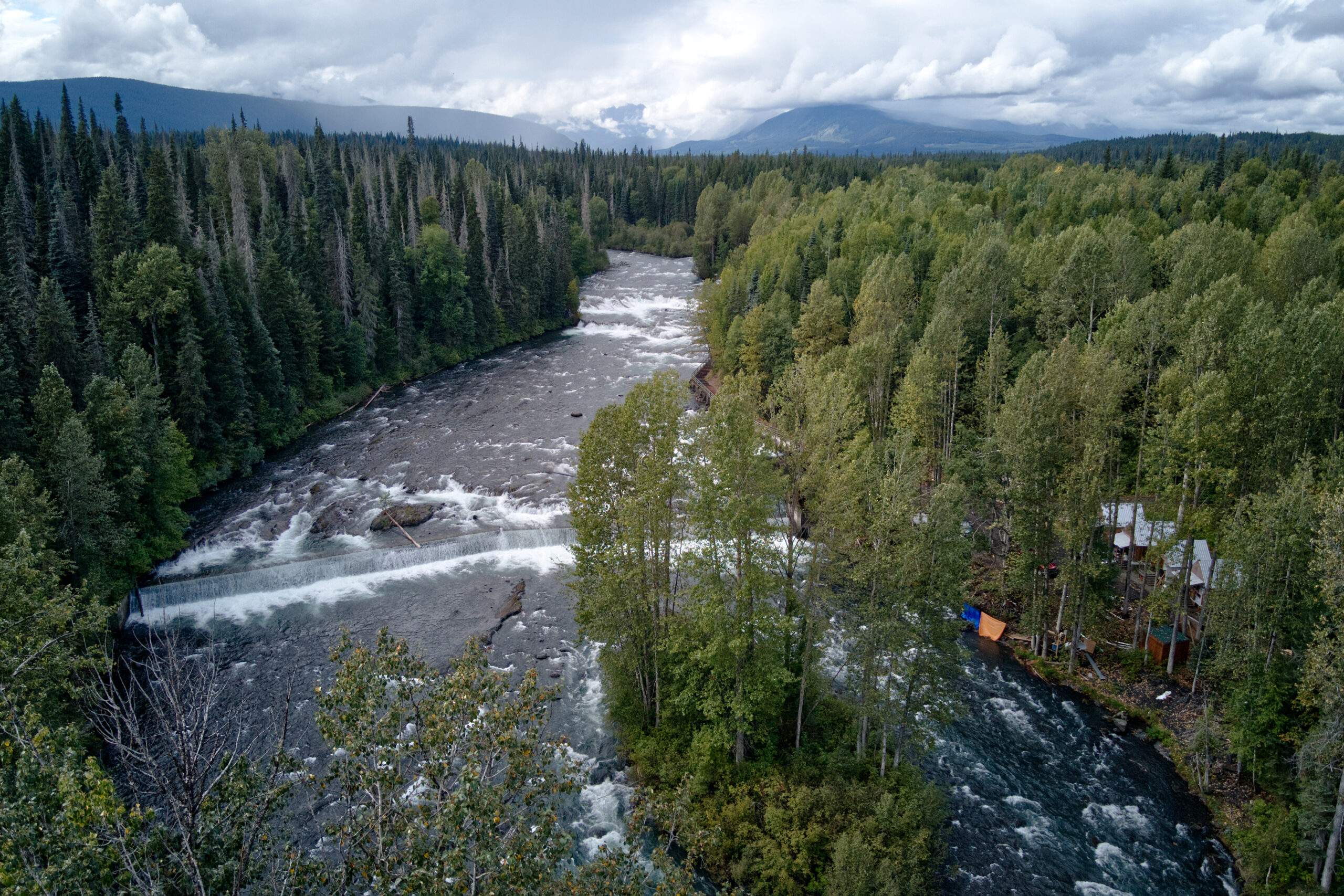
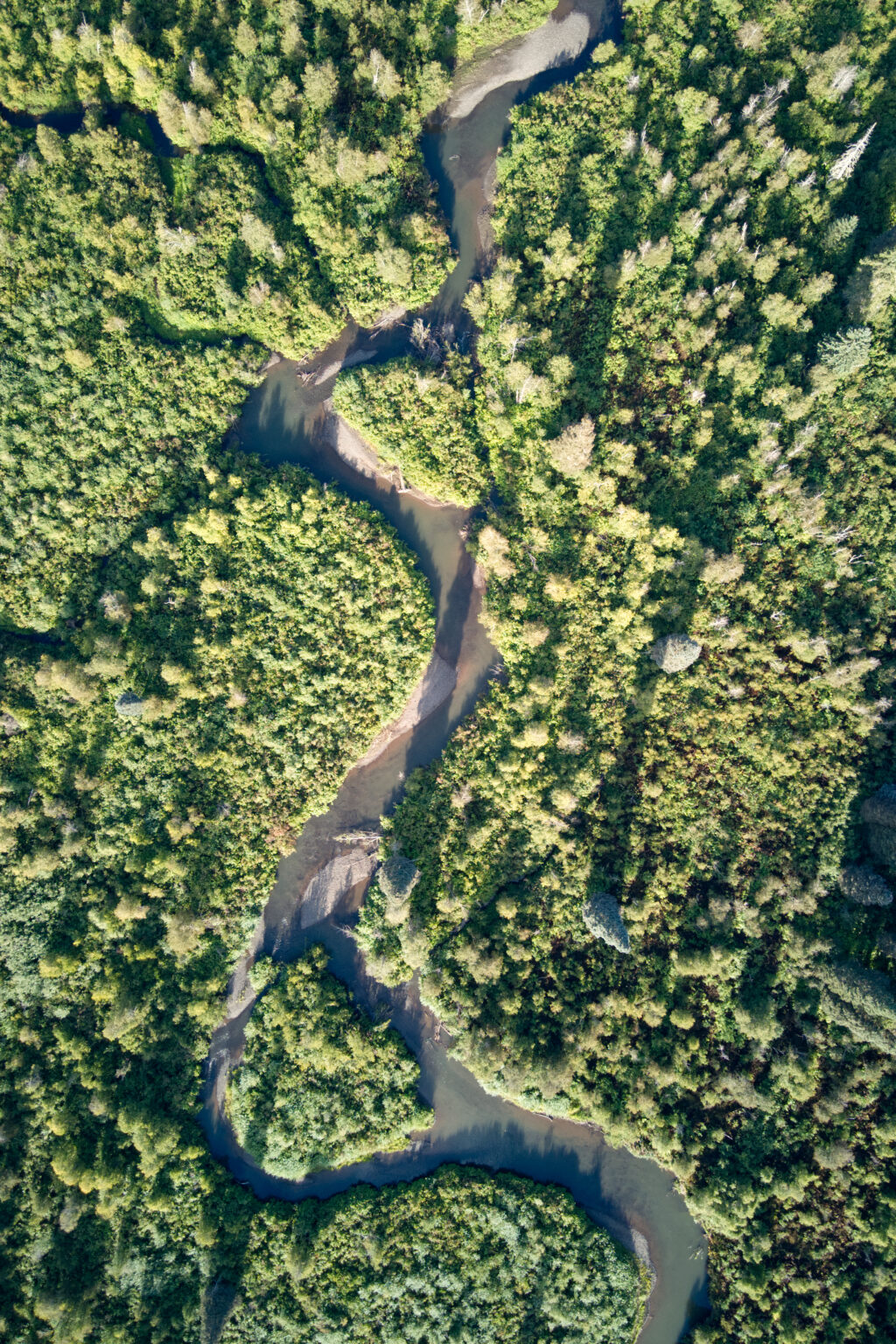
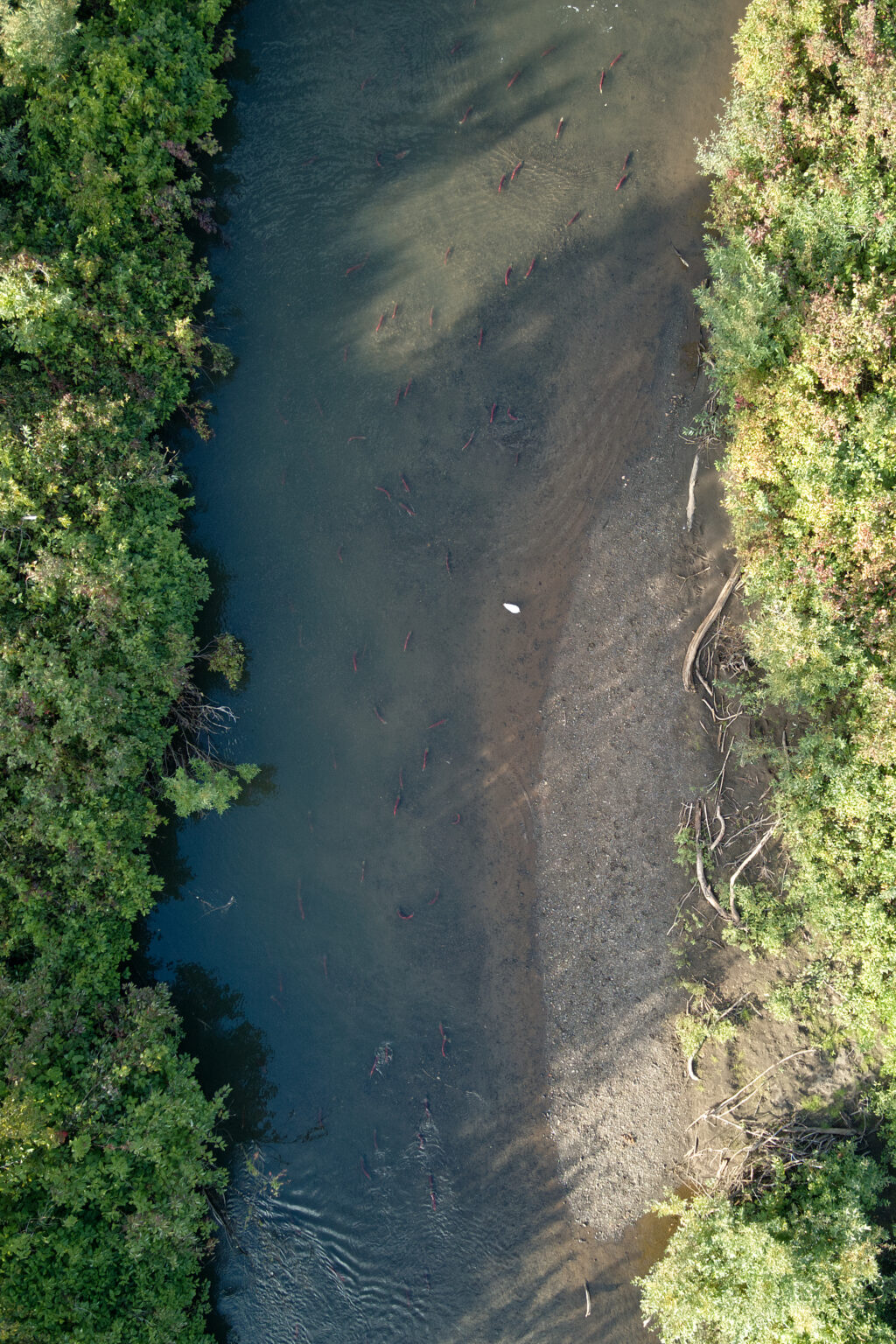
But the speed at which ecosystems in Gitanyow territory are changing due to a warming climate, coupled with the threat of mineral exploration impacts to struggling wild salmon populations, spurred the hereditary chiefs to declare the creation of the Wilp Wii Litsxw Meziadin Indigenous Protected Area in advance of any provincial decision.
Williams told the audience that provincial representatives did not accept an invitation to attend the event.
“It is unfortunate that one part of the government chose not to be here today. They were instructed not to attend, not to come here because we were exercising our li’ligit (feast system) to use our traditional law to protect where wild salmon spawn and to ensure that our future generation, our youth, our young people continue to have food security.”
He paused and added, “Enjoy the salmon.”
The Ministry of Forests, Lands, Natural Resource Operations and Rural Development declined an interview request and did not clarify why provincial representatives decided not to attend.
“Yes, B.C. received an invitation to the event,” the ministry wrote in a statement provided to The Narwhal. “This declaration is a Gitanyow-led initiative and we are in early discussions with Gitanyow to understand their proposal; we have additional work with other First Nations and stakeholders prior to formally acknowledging the proposal.”
Williams gestured towards the river.
“Just last night, over 3,000 sockeye passed just a few feet down the road. Now we’re at 221,000 that have passed and they’re into the spawning beds: into the Hanna, Tintina, Strohn and the lakeshore. And yet we hear from B.C., ‘We will protect wild salmon and habitat,’ and they didn’t want to come, to stand with us.”
“I think they should just continue to stay home and give our land back. That would be justice.”
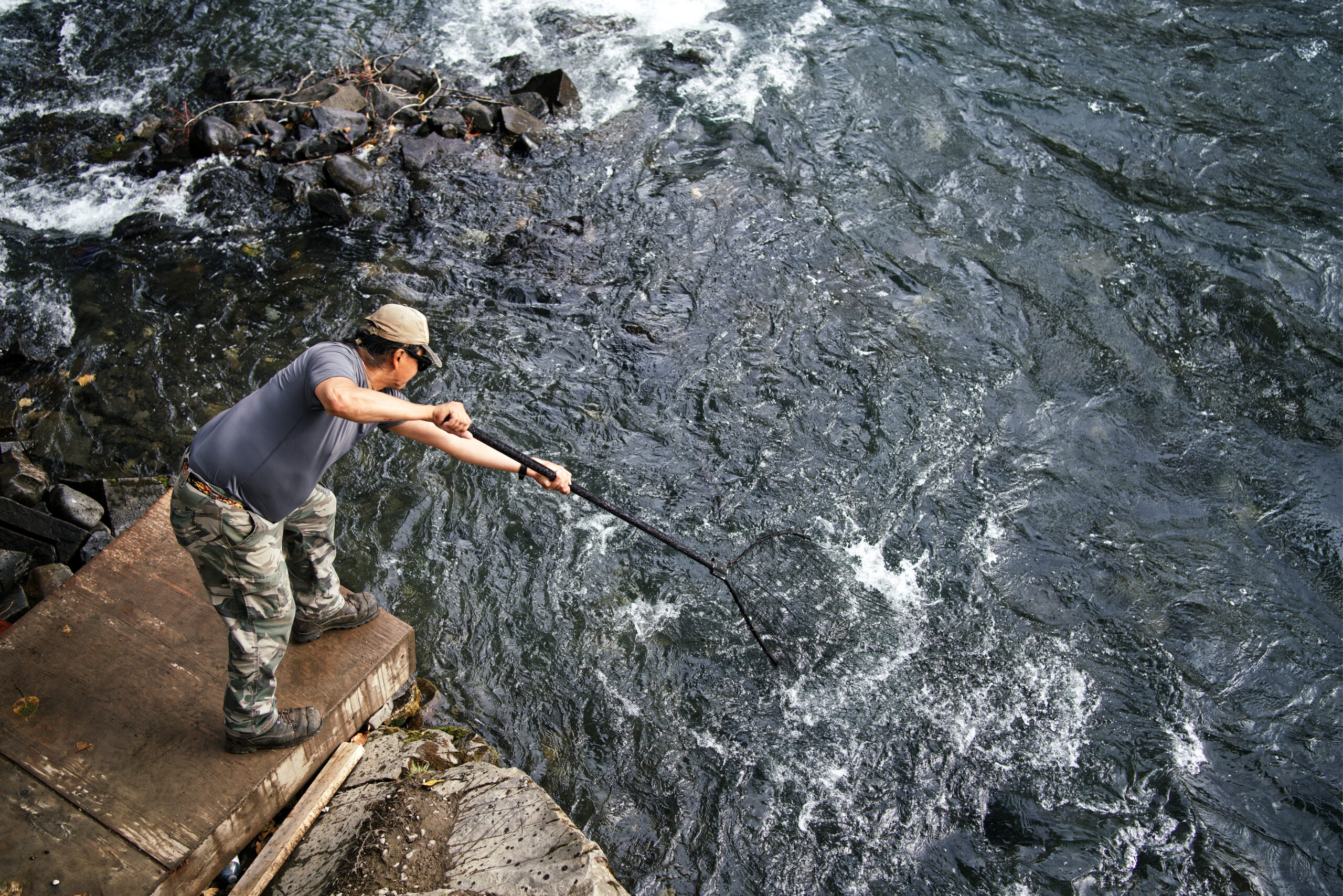
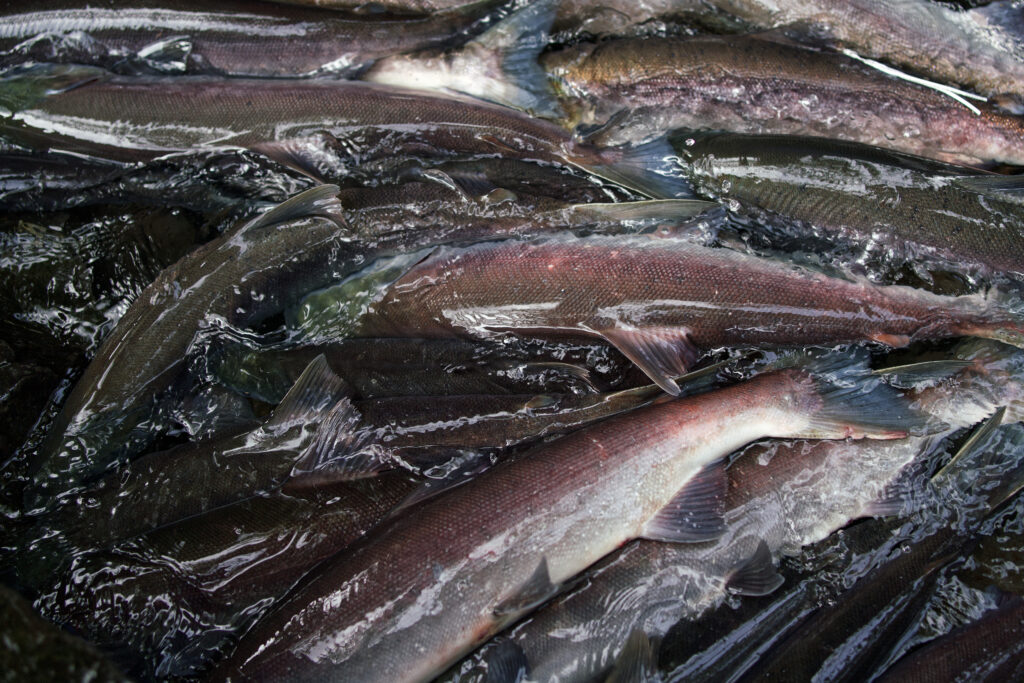
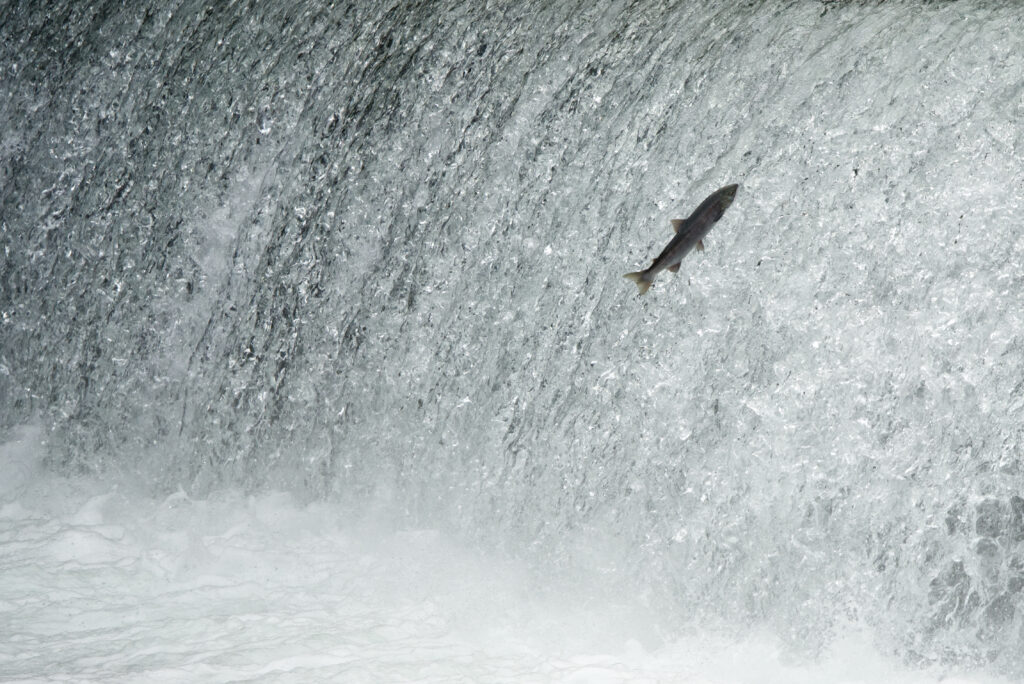
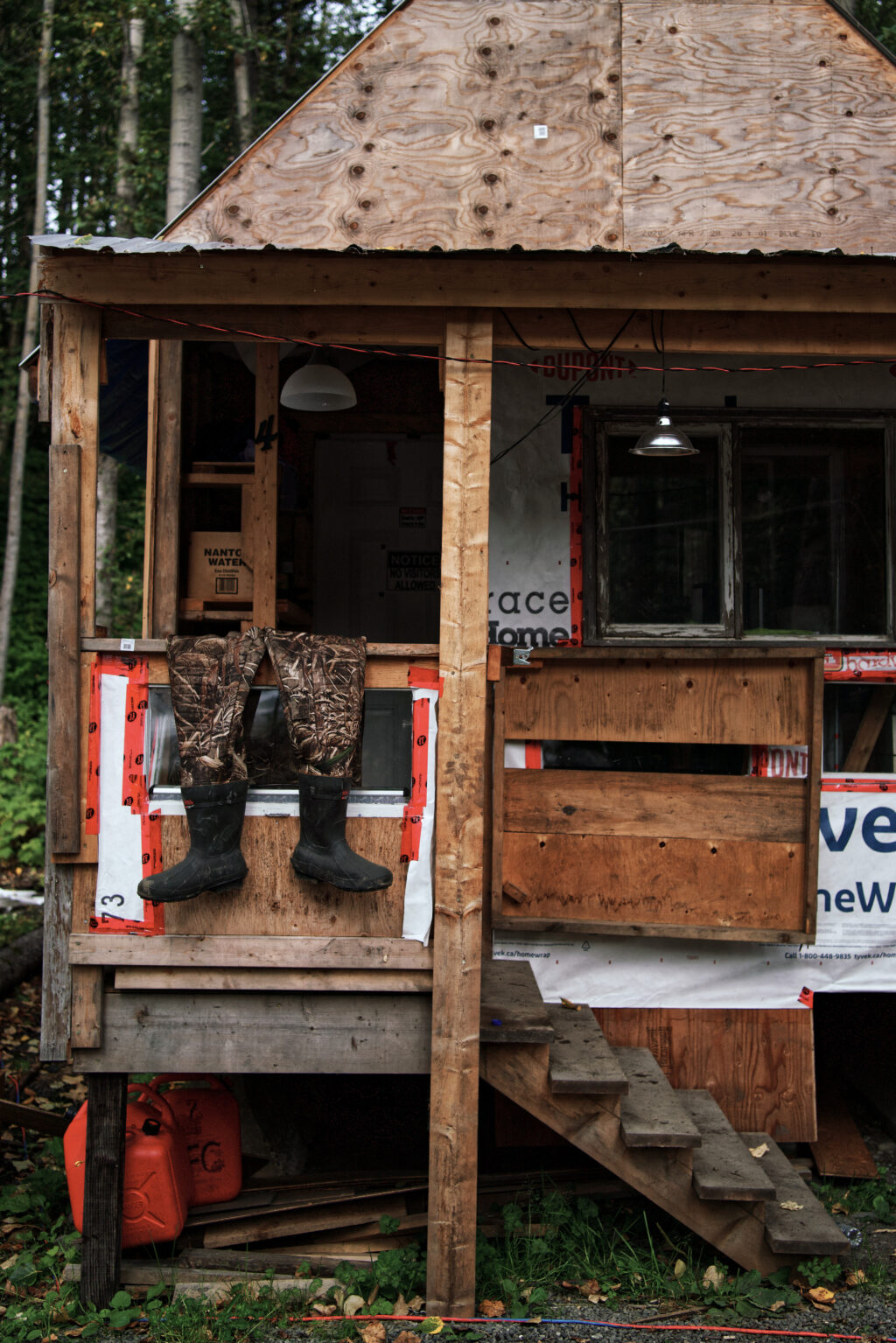
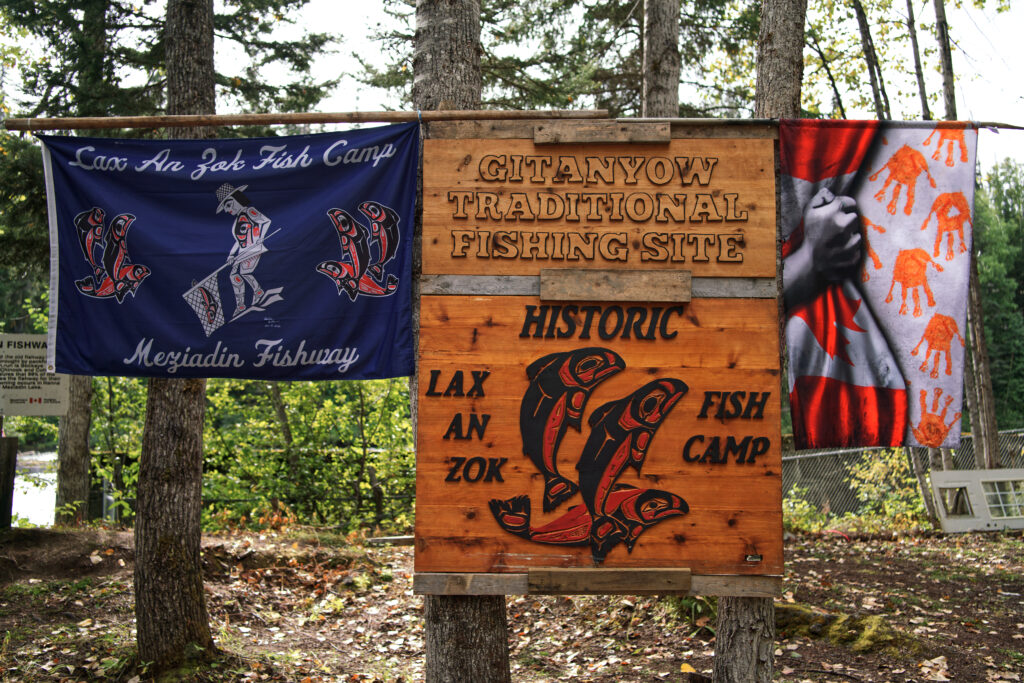
Further into Wilp Wii Litsxw territory, grizzly tracks mark the banks of Strohn Creek at the northwest end of Meziadin Lake, a sign the sockeye are returning to spawn after their long journey up the Nass and Meziadin rivers. The runs are only just starting but already flashes of red contrast with the turquoise water as fish jump and show their fins at the creek’s mouth.
The decision to protect the watershed as an Indigenous Protected and Conserved Area had its genesis when Gitanyow fisheries researchers discovered a sharp decline in stocks spawning in Hanna and Tintina creeks — an area already protected as a provincial conservancy — and an increase in the populations returning to Strohn and Surprise creeks further to the north, which lack protection.
The Hanna-Tintina Conservancy was established in 2012 after the signing of the Gitanyow Huwilp Recognition and Reconciliation Agreement and the development of an associated land-use plan. The main purpose of the land-use plan was to protect sockeye — about 75 per cent of all Nass River sockeye, the third largest run in the province, spawn in the Meziadin watershed.
Armed with data on the natural redistribution of sockeye populations, the Gitanyow asked the province to expand the conservancy.
“If you’ve got the third largest run of salmon and you’ve already acknowledged the value of Hanna and Tintina, why would you not acknowledge the same value here when it’s even higher in productivity now?” Naxginkw Tara Marsden asks, as we watch the salmon at the mouth of the creek. Marsden is from Wilp (house group) Gamlakyeltxw and works as Wilp sustainability director for the Gitanyow Hereditary Chiefs’ office.
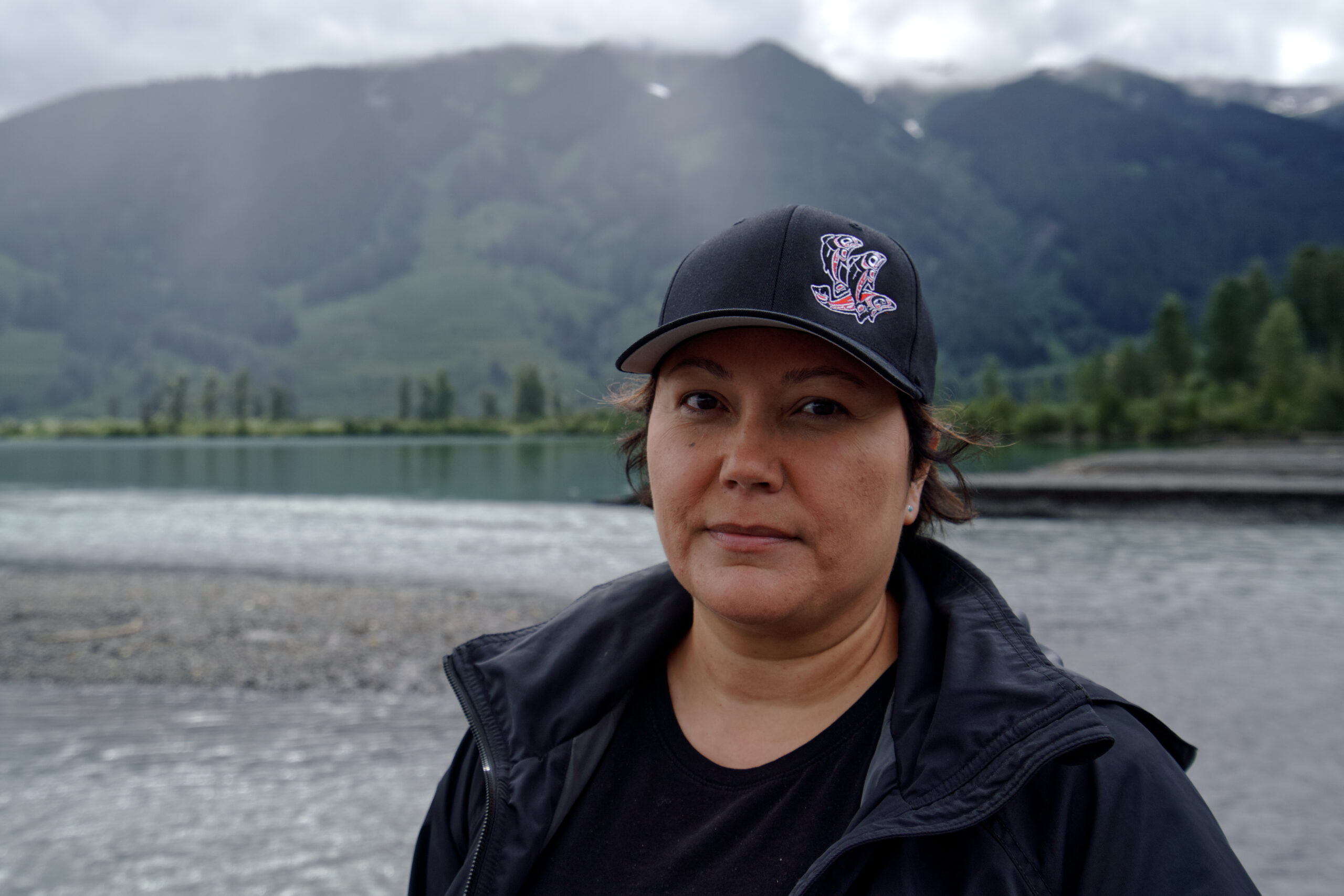
Naxginkw Tara Marsden, Wilp sustainability director for the Gitanyow Hereditary Chiefs’ office, says B.C. should do more to ensure protections for and acknowledge the value of salmon.
The glacial-fed creek systems that provide ideal habitat for the fish have their headwaters in the northern Coast Mountains, where mineral exploration companies are staking claims and looking for new opportunities as glaciers recede, revealing potential deposits of valuable minerals. There are six companies with active claims above the salmon habitat, according to an email provided to The Narwhal by the Gitanyow.
“One of the challenges in expanding the conservancy has been that [mineral exploration] is not enough of a threat,” explains Marsden, who believes the province is reluctant to embrace a new Indigenous Protected Area because it wants to capitalize on economic gains from mining activity. While mineral exploration has less of an impact than developing and operating a working mine, companies are allowed to divert water from the creeks to facilitate test drilling. Marsden says it’s unlikely a mine will ever be built in these mountains. “They’re just staking claims trying to generate some buzz and generate some money.”
Mining claims in B.C. can be staked without Indigenous consent. The province’s Mineral Tenure Act, which governs the claim process, dates from the mid-1800s and has not been updated to reflect Indigenous Rights. Critics of the act point out that B.C. doesn’t even require companies or individuals talk to First Nations before staking a claim or entering their territories to take a look at the land, let alone obtain their consent.
The Gitanyow are not against mining, Marsden notes, but they’re not willing to risk losing one of the few viable salmon populations left in the watershed.
“Brucejack mine, that’s a good mine for most people,” she says, referring to a gold mine near Stewart, B.C., just outside of Gitanyow territory. “It’s in a good location, the waste treatment is good and it provides a ton of jobs for people.”
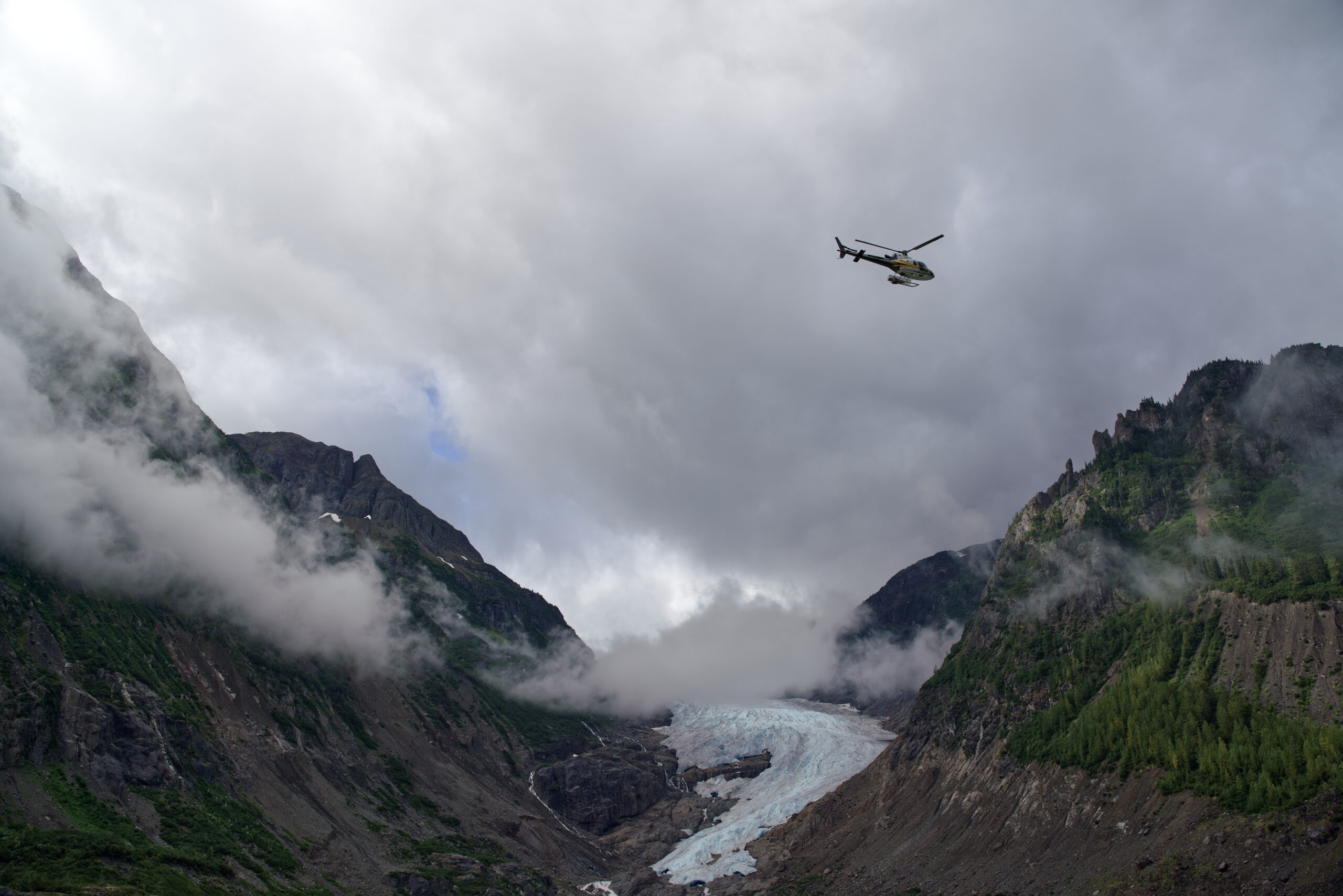
A helicopter flies above mountain ranges near Smithers, B.C., where a significant amount of mining activity takes place. The Gitanyow say they support the work of some local mines and want to see economic development balanced with salmon protections.
Expertly piloting the Lax Yip Protector, a new research boat, off the beach at Strohn Creek and down the lake, Mark Cleveland, head fisheries biologist with the Gitanyow Fisheries Authority, suddenly stops the engine and points to a dark shape in the water — a bear, swimming across the lake.
“I thought it was a moose,” he says with a grin.
Spotting a bear in the middle of the lake is rare, even though the region is home to one of the highest concentrations of grizzlies in the province.
“About five years ago on Hanna, in one flight over a 10-kilometre section, [we saw] 12 grizzly bears,” Cleveland says. The fisheries team conducts regular helicopter surveys to assess the health of spawning populations. “And that’s just the ones we saw because most of the time they’re pretty smart, they run off before you get there with the helicopter.”
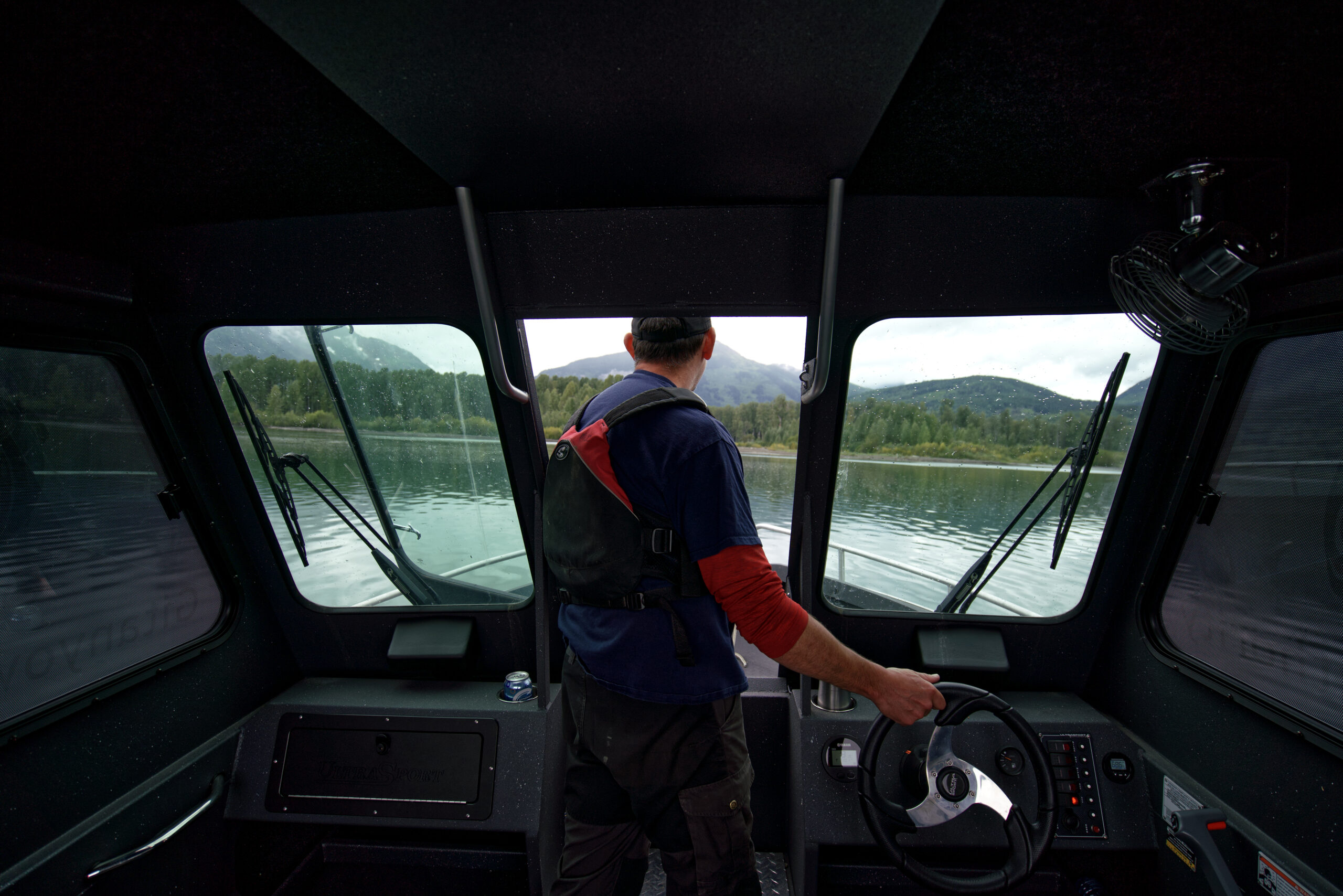
Mark Cleveland, head fisheries biologist with the Gitanyow Fisheries Authority, pilots the Lax Yip Protector research vessel on Strohn Creek. The Gitanyow hereditary chiefs have recently declared a new Indigenous Protected and Conserved Area in their territory in northwest B.C.
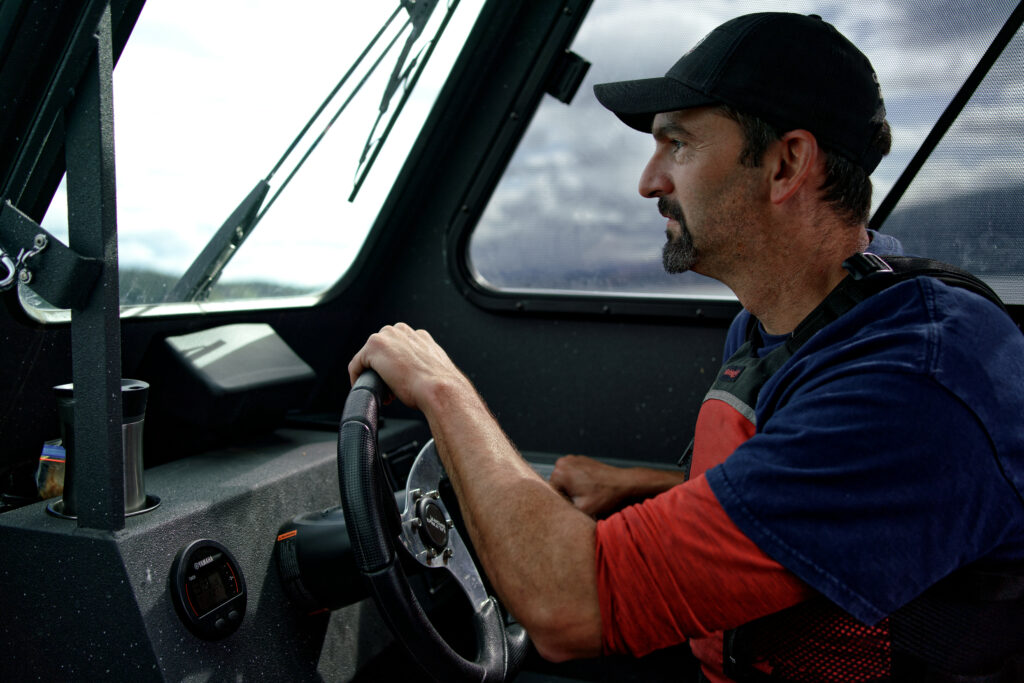
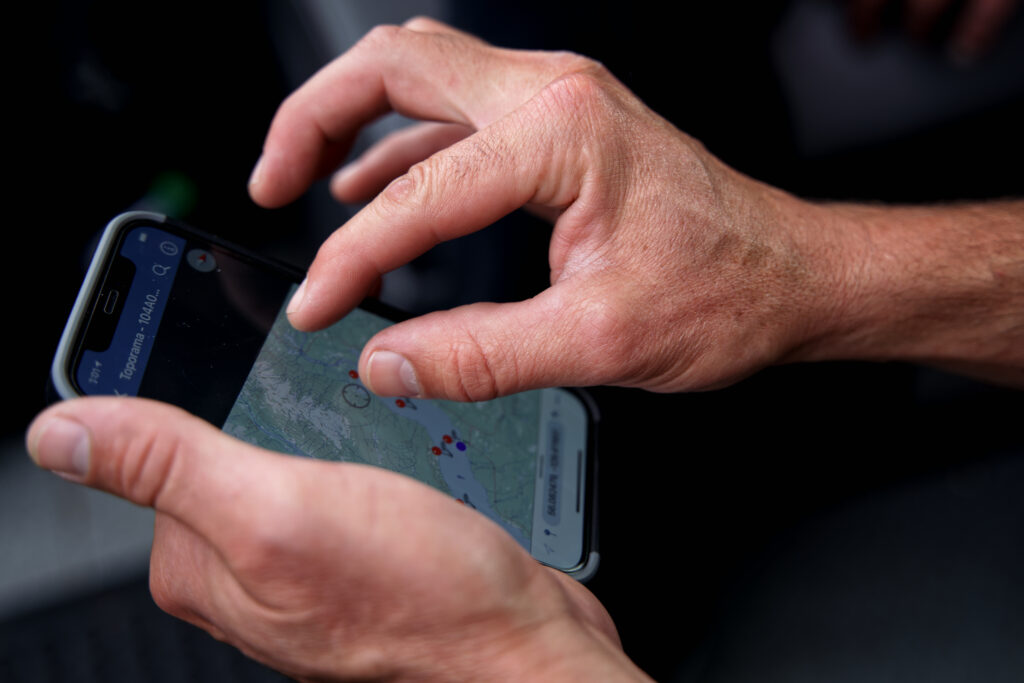
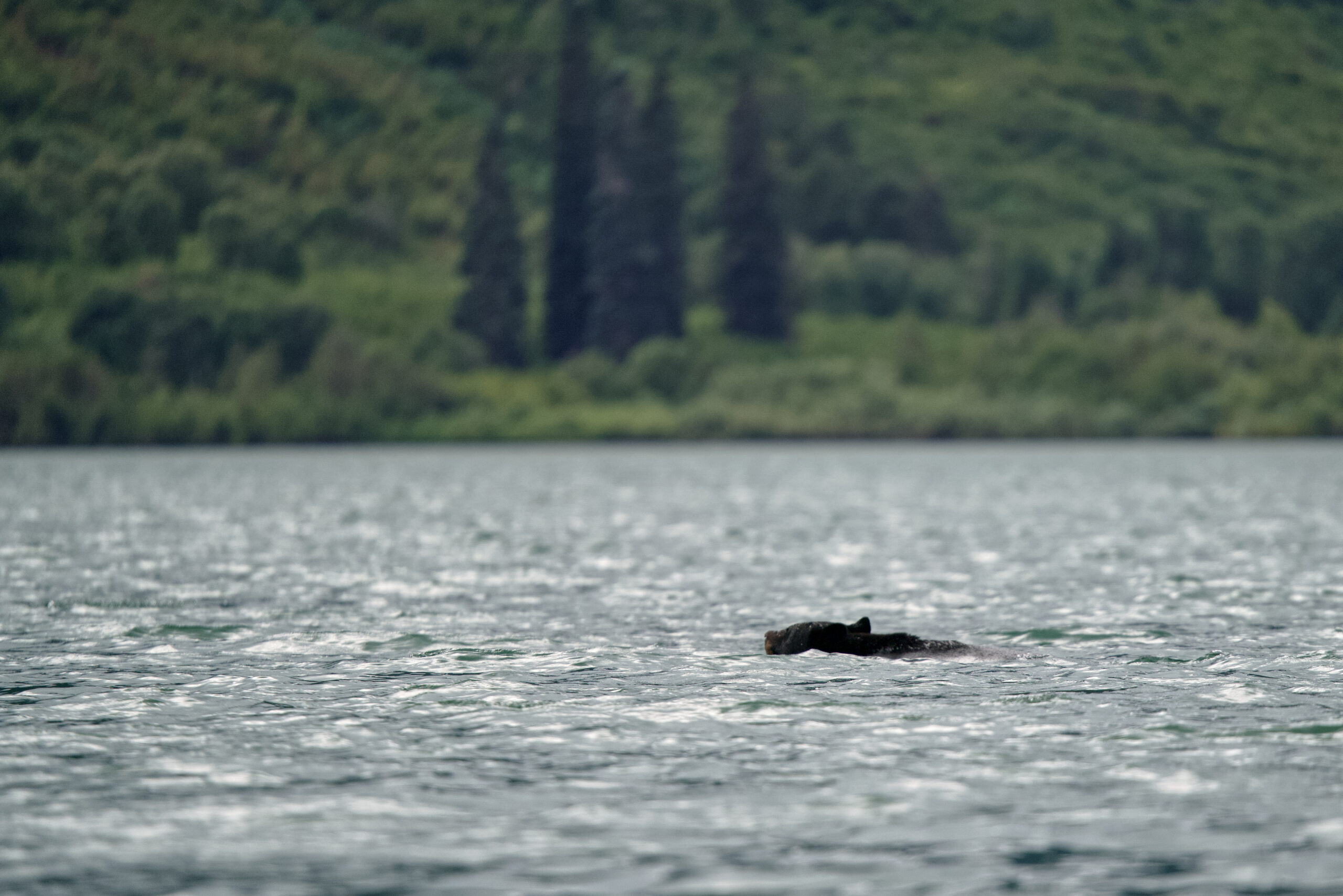
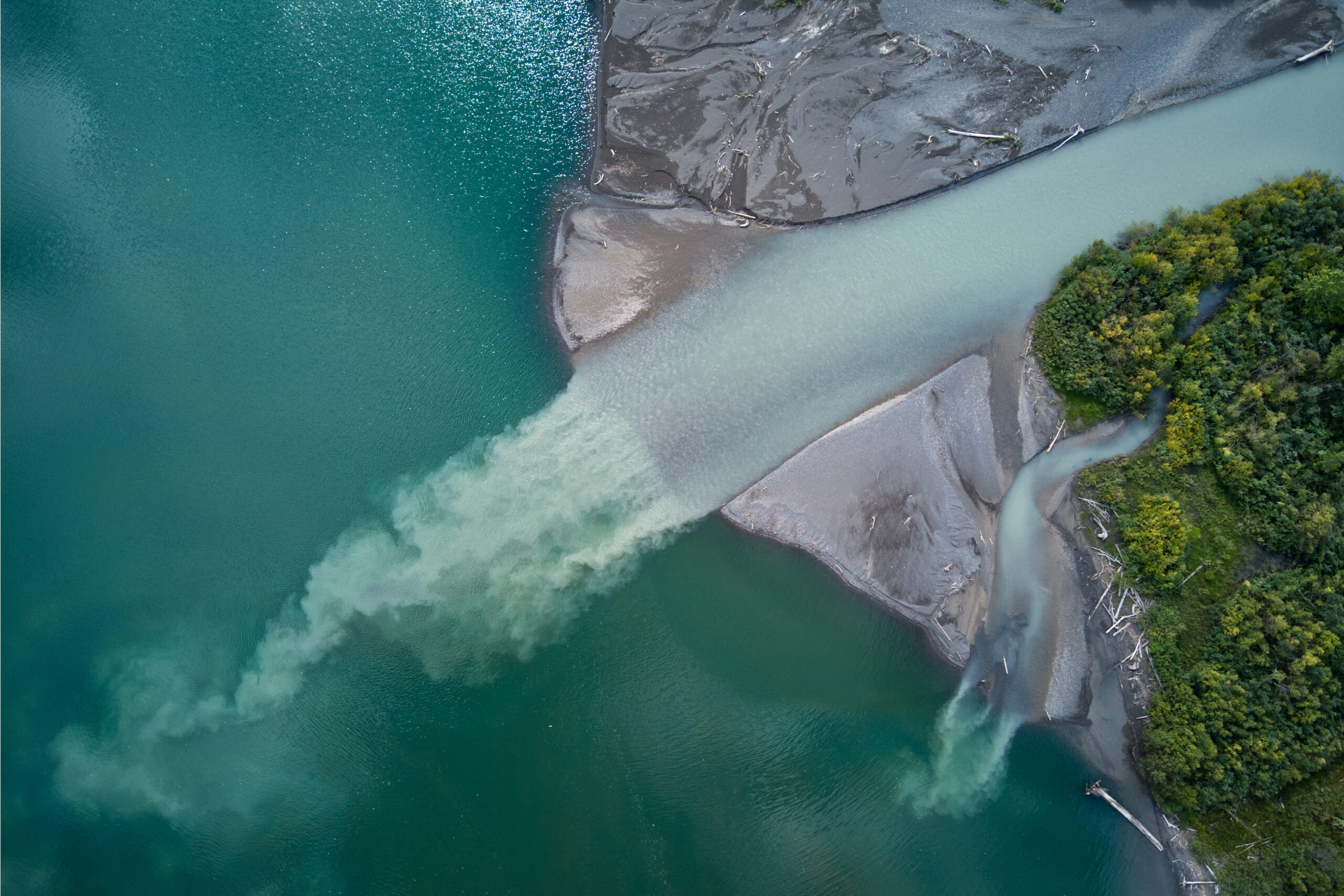
Those bears thrive because of an abundance of food sources. But as the ecosystem evolves as climate change warms the creeks and lake, rendering habitat less suitable for the bears’ preferred food sources, grizzlies have to adapt and move around the territory. The salmon that return to Strohn to spawn arrive about one month later than the populations that congregate at Hanna and Tintina, Cleveland explains. As fish populations decline, the bears will have to find alternative food sources.
“There’s all these spin-off effects that come to light,” he says.
Protecting the watershed as an Indigenous Protected Area allows the Gitanyow to adapt more nimbly to changes and control activities within the area boundaries.
“The Indigenous Protected Area is not a park,” the declaration states plainly. “It is a new way of being with the land and water, in respect, but also ensuring our people and our neighbours can sustain themselves with employment opportunities.”
Leaving the bear to its long swim, Cleveland turns the boat back towards the south end of the lake. Marsden points towards a forested hillside.
“You can look down there and you can see logging, right? This is clearly not an anti-development situation. This isn’t Fairy Creek,” she says, referring to the ongoing Vancouver Island conflict about old-growth logging that has seen more than 1,000 people arrested in Canada’s largest act of civil disobedience.
“This is a more moderate proposal, I would say, and something that we’re doing for ourselves and for future generations with fish, but it’s not a ‘protect everything’ [scenario]. We have a lot of balance that has to happen within our own nation — a lot of people who are in forestry and who want to continue to be.”
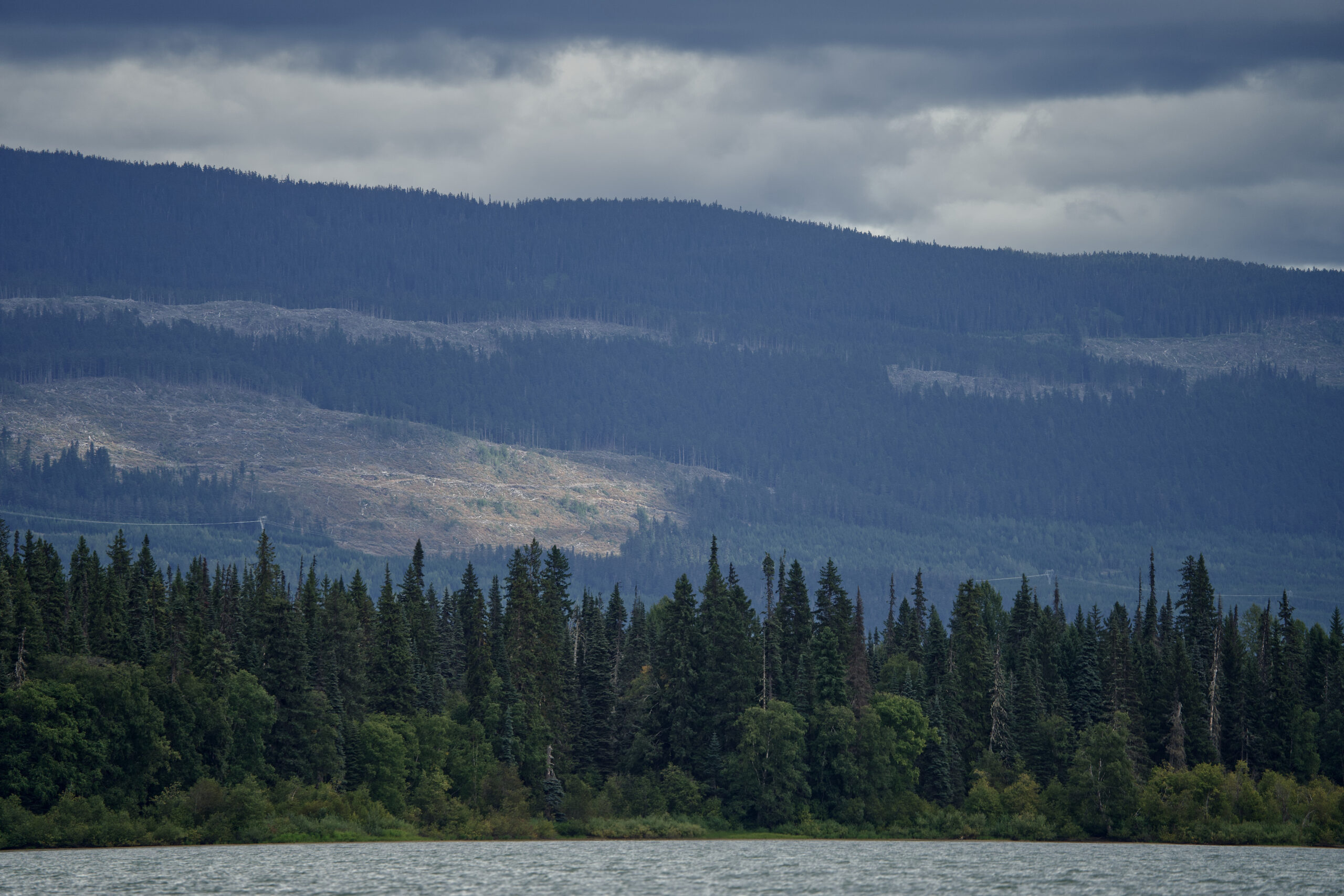
Marsden says the protected area is not a park and not motivated by anti-development sentiment among the Gitanyow.
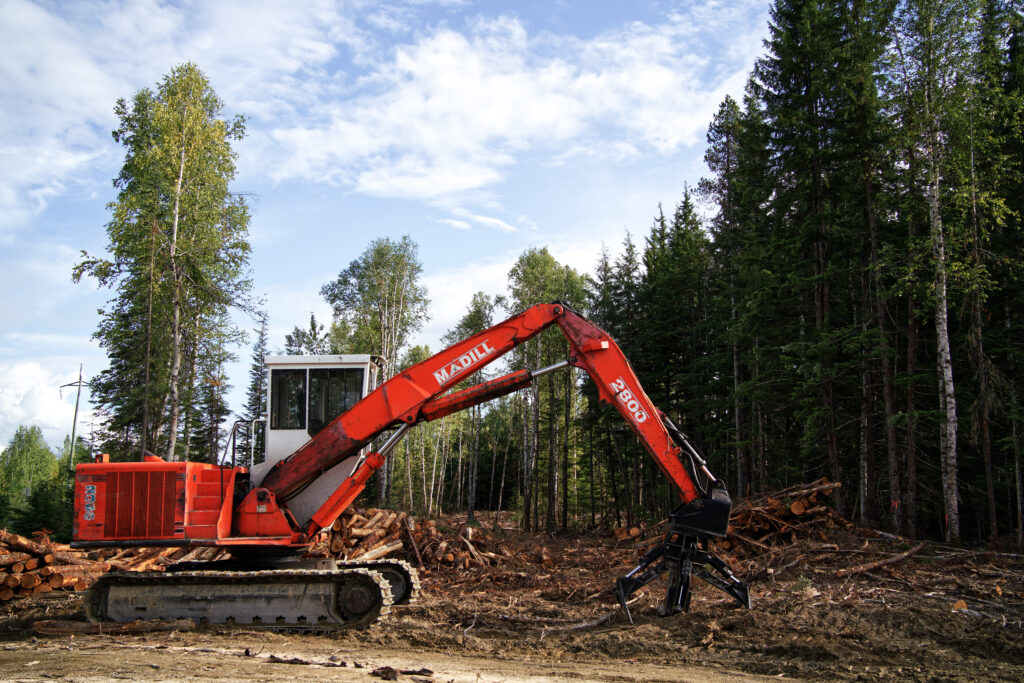
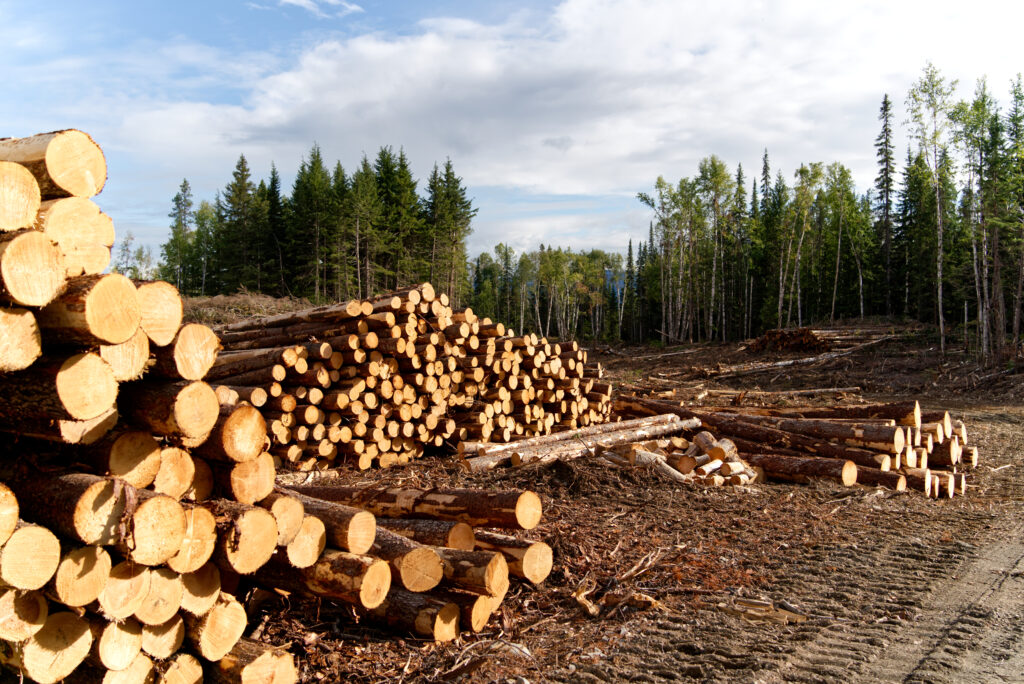
Complementing the Gitanyow fisheries research is the Gitanyow Guardian program, which started six years ago with seed funding through the Environmental Stewardship Initiative, a collaboration with the province and other First Nations.
Lead guardian Jimmy Morgan has an infectious smile and clearly loves his job.
“I just feel really blessed,” he says, standing on an artificial bank he helped create to restore a tributary of the Hanna that had been damaged by long-term impacts of legacy forestry operations. “Not very many people even get to go out on their territory, and I get paid to help take care of it.”
In the 1960s and 1970s, forestry companies logged most of the area. Deciduous species, which sucked up water from streams and creeks, primarily grew back. When a series of wooden bridges, built to access the timber, caved in, they clogged all the tributaries. The downstream impacts ruined important fish habitat, flooding some areas and drying up others.
The guardians cleaned everything up and diverted streams that had broken their banks as a result of the industrial impacts. Young salmon need wetlands to survive the long winters, Morgan explains.
“That’s where the little cohos and sockeyes go and overwinter,” he says. “The wetlands down there were never really full. They didn’t have big ponds as much as they do now.”
Lead Gitanyow Guardian Jimmy Morgan says his work on the land is fun but also tough. “Scary too, ‘cause we’re working pretty close with the grizzlies out here.”
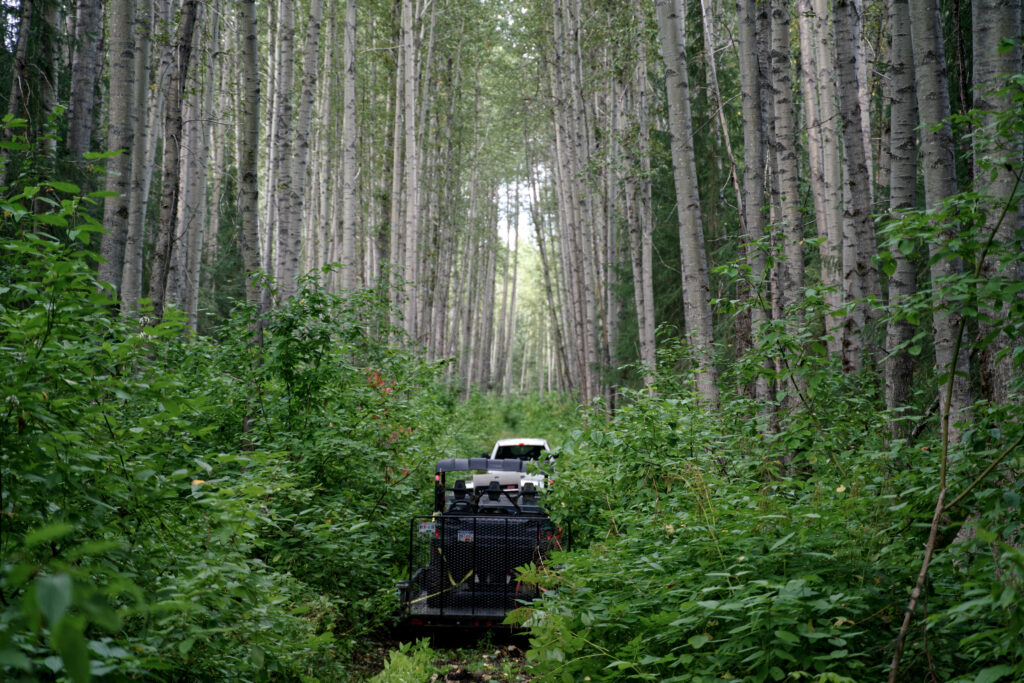
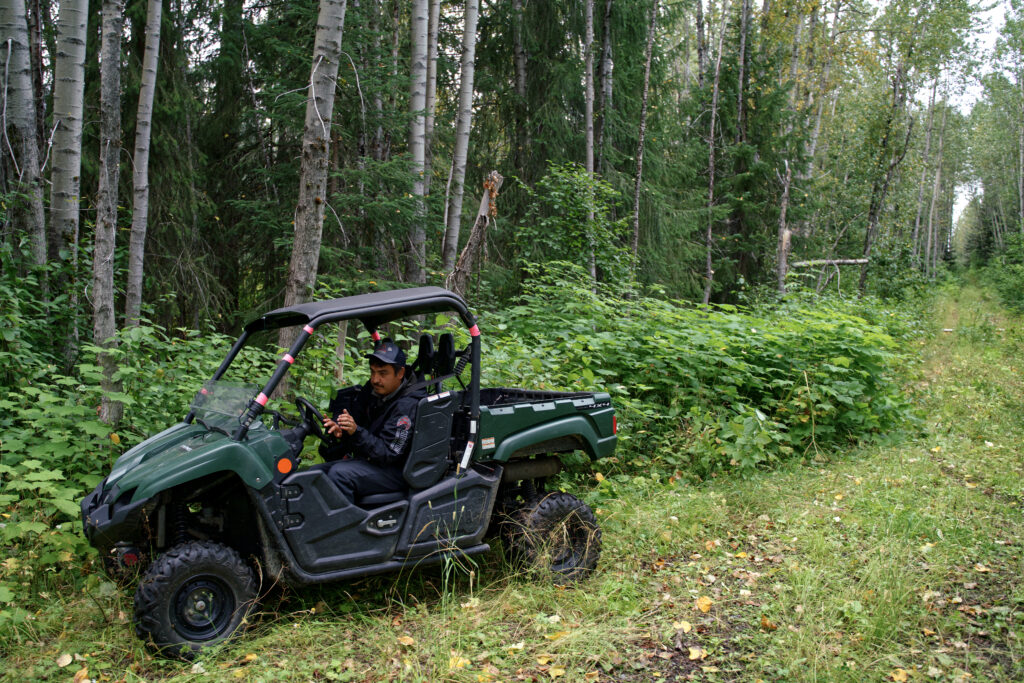
Morgan is from a bordering community but his wife is Gitanyow.
“I’m an eagle from Kitwanga and I have no idea about the ins and outs of my territory but I know everything about my wife’s,” he says with a laugh. The matrilineal system of hereditary governance means Morgan’s kids have the potential to become high-ranking Gitanyow chiefs. “I have the opportunity to teach them all of this and how to respect it,” he adds, gesturing around at the landscape. “I’m just really honoured to be able to do this.”
Morgan also works with organizations like Nature United to support other Indigenous communities across the country, sharing his knowledge and experiences at events such as a recent national gathering hosted by the Indigenous Leadership Initiative.
“It’s fun sometimes and other times it’s pretty tough work,” Gitanyow Guardian Dustin Gray says, one of his fingers bandaged from a recent fracture. “Scary too, ‘cause we’re working pretty close with the grizzlies out here.”
Gray grabs his phone and pulls up photos and videos of bears and wolves the guardians have encountered while looking after the territory, recalling the pack of wolves that sauntered right past him while he was planting grass seed to stabilize the banks of a stream.
“I really like this job because we’re out here in the territories,” he says. “I learned a lot of stuff off of Jimmy, while I was working with him, and I jumped on with the fisheries for a little while, learned quite a bit off of them. It’s just been really awesome.”
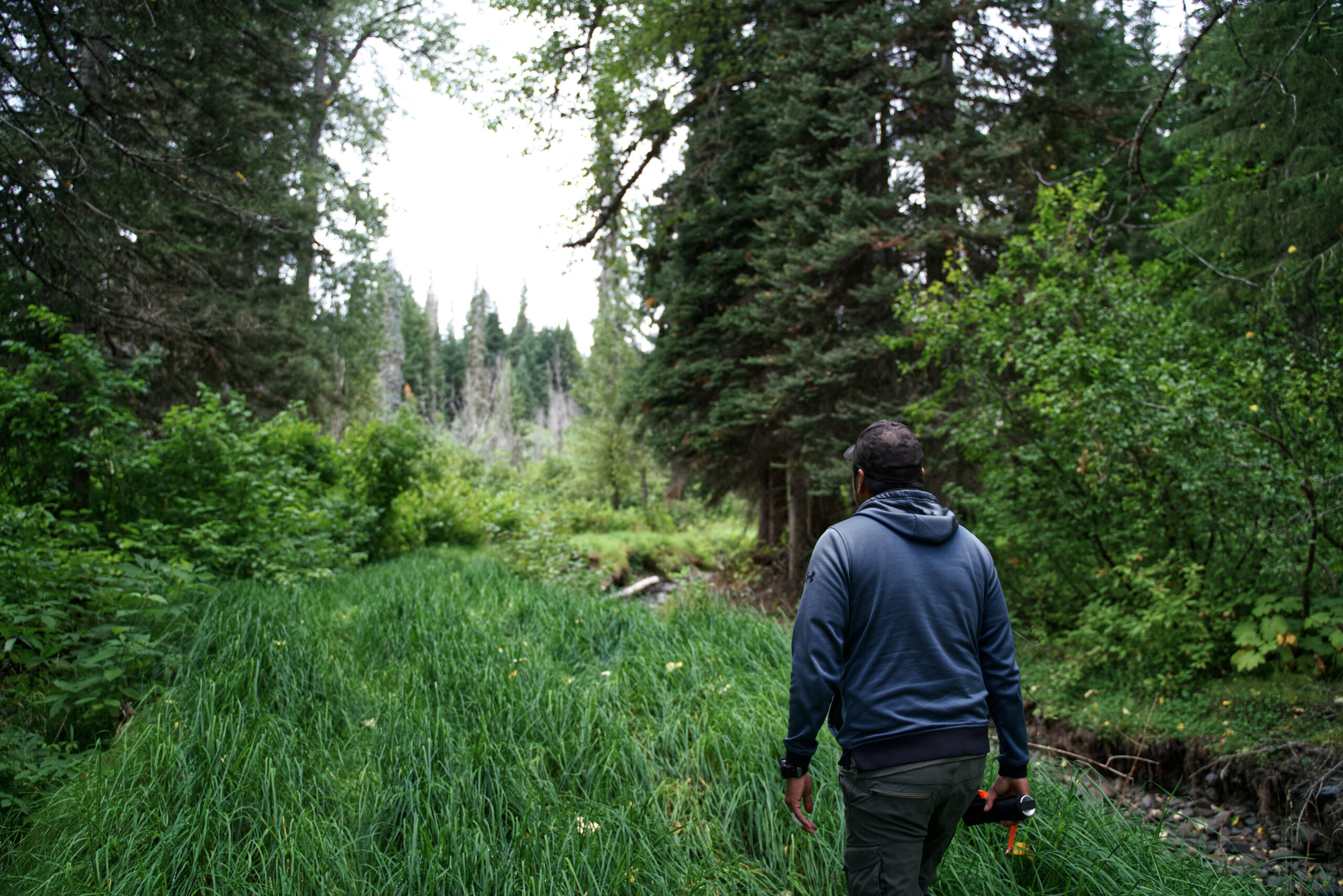
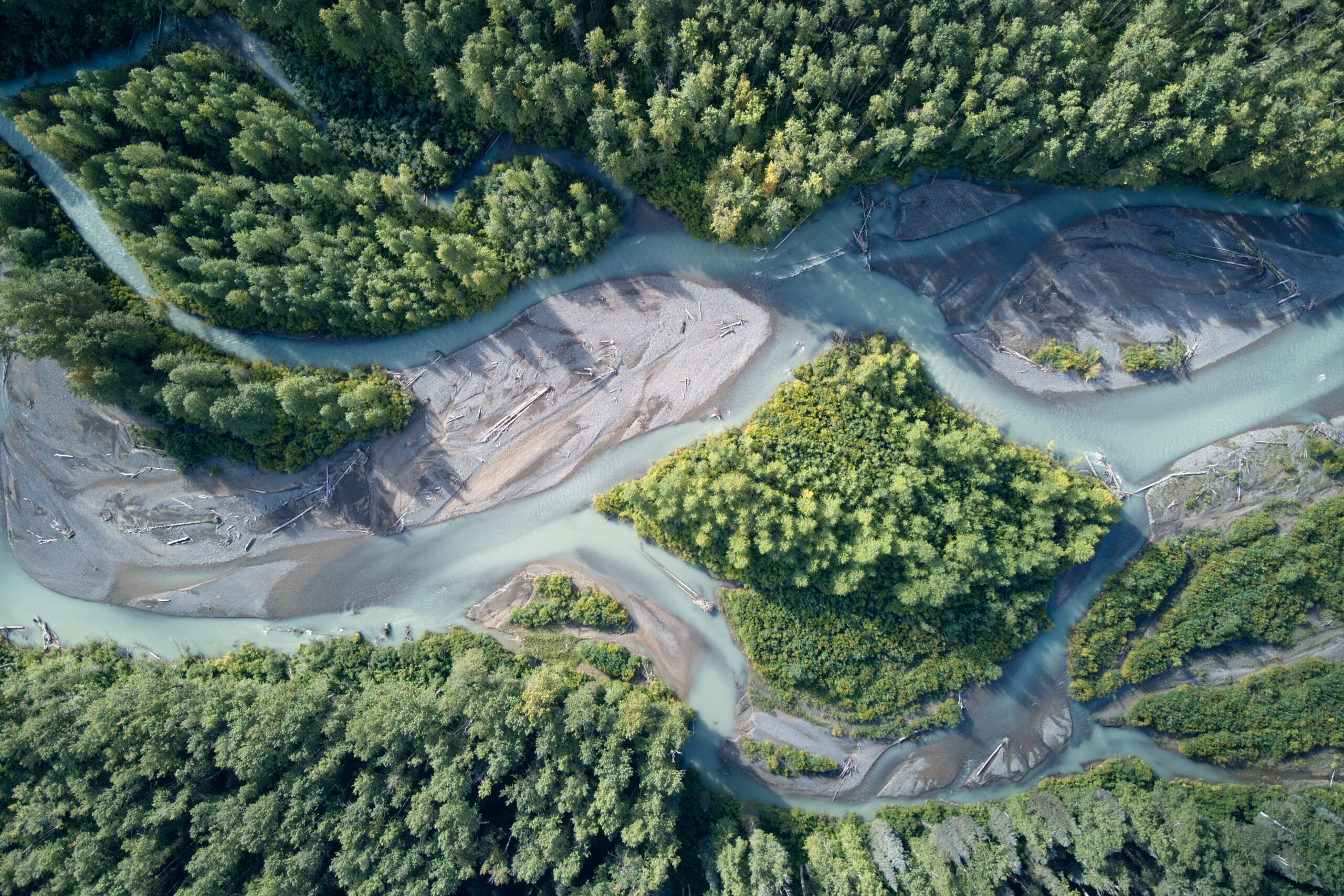
Part of the job is being the “eyes and ears” of the hereditary chiefs. When the guardians spot someone on the land engaged in a prohibited activity, whether it’s hunting in an off-limits area or conducting unauthorized mineral exploration work, they take a non-confrontational approach.
“We don’t go in and say, ‘You guys got to get the bleep out of here,’ ” Morgan explains. “We go in there and say, ‘This is who we are, we have a land-use plan, you’re welcome to come and talk to our directors and here’s our card.’ And then we’ve done our job. And then it’s up to them to do what’s right after. I love our process.”
Morgan attributes many of the successes the Gitanyow have achieved to the nation’s progressive approach to conservation projects.
“One of the main things Gitanyow does that I love is that they work with professionals — they find the best of the best.”
Those collaborations include working with people like aquatic ecologist Allison Oliver, glaciologist Matthew Beedle and wildlife biologist and trapper Dave Hatler. Hatler helped the nation tackle a beaver population problem wreaking havoc on the ecosystem.
“We could have just gone and got one of the best trappers in our village but because we value scientific methodologies and traditional knowledge, we always try to combine the two together,” Morgan says. “We found a guy in Telkwa, a professional trapper. He literally wrote the book on the regulations in B.C.”
“He came out and it was amazing. He looked at the whole area [and said] ‘Once we trap out seven beavers we’ll be able to get the big mama and once you get the lady out, it’s done.”
For Morgan, the new protected area is a natural extension of that collaborative approach.
“To me the [Indigenous Protected Area] is a perfect playground to showcase how industry and Indigenous governments can coexist and work together,” he says. “This is going to be a huge example. Our leaders are our chiefs, and this is their area. If they give us permission, then we go and do it. That’s just Gitanyow’s mentality; it’s going to happen anyway and you can either come along for the ride and join us or just watch it happen.”
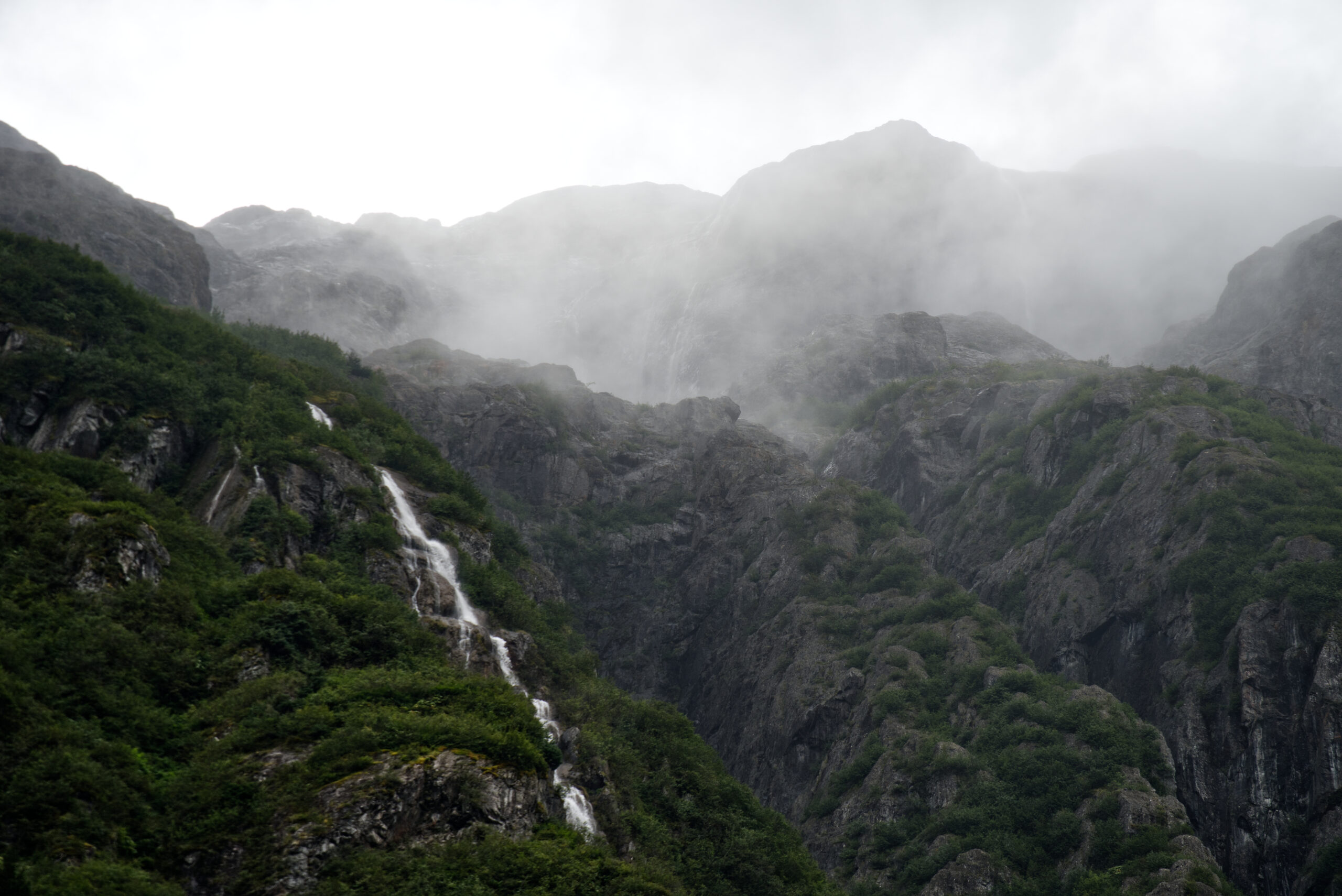
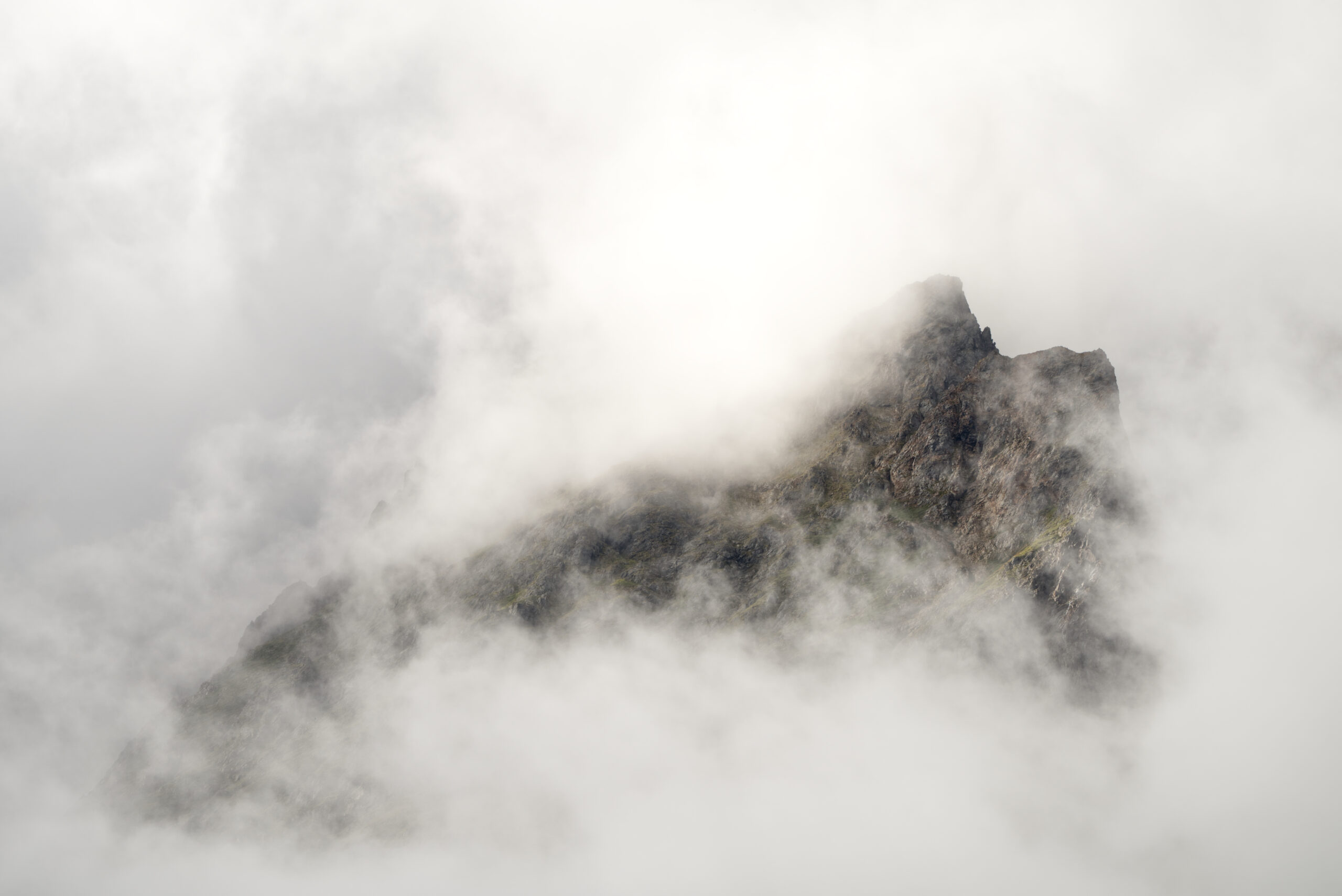
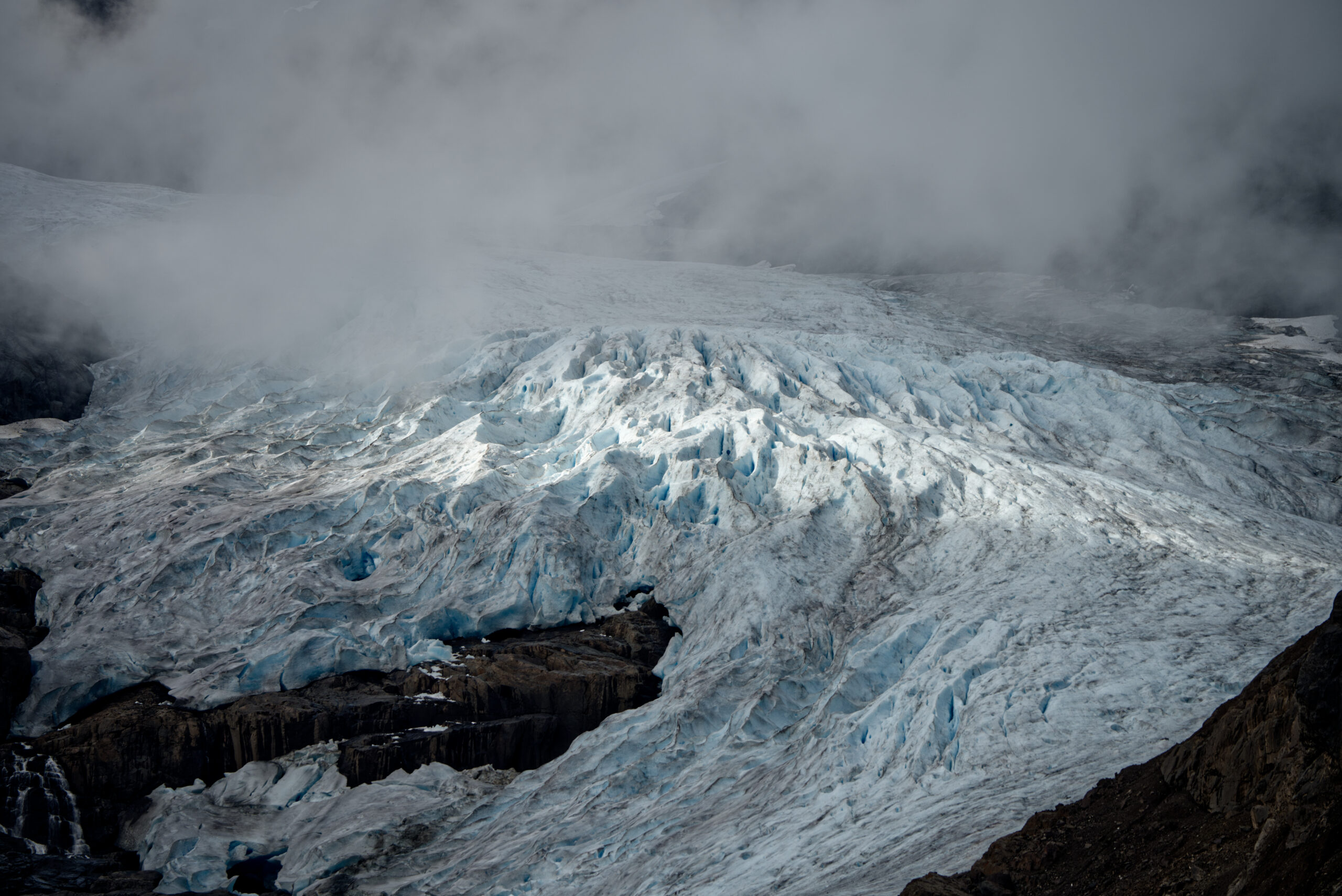
In tandem with signing the declaration, the Gitanyow chiefs released a draft management plan for the new protected area, outlining a vision for the area and detailing permitted and prohibited activities. Underpinning every aspect is a simple concept: gwelx ye’enst, which is the “right and responsibility to pass on the territory in a sustainable manner from one generation to the next.”
Sustainable use includes allowing recreational users and visitors to continue exploring the area, partnerships with Gitanyow-led businesses and building culturally significant buildings and infrastructure, according to the plan.
Wilp Wii Litsxw will also create a science and climate change study centre and a cultural camp and will commence Elders and youth programming within the protected area, the plan notes.
“We have affirmed in our Ayookxw (laws) that the entire Meziadin watershed is protected from mining and mineral exploration, railway and other major industrial development,” Simogyet Wii Litsxw Gregory Rush Sr. said in a statement. “We take this important step to let government, industry and the general public know that this area must be cared for by the original stewards of this land — Wilp Wii Litsxw and the Gitanyow.”
Many Elders and matriarchs gave their speeches in Simalgyax, a language that, like many Indigenous languages, was nearly lost to the impacts of colonialism.
Williams concluded his speech by speaking directly to the younger generation.
“It’s now for the young people — our young Gitxsan, Gitanyow people — to stand up and be firm and be bold and transition our lax’yip (territory) back to the rightful owners.”
“The former Delgamuukw, the late Albert Tait, used to always say when things were tough …‘Who are we scared of?,’ ” Williams said, referring to the Gitxsan hereditary chief who fought for recognition of Indigenous Rights and Title in a landmark Supreme Court case.
“This is all our land.”
The photography for this story was made possible in part by financial support from the Real Estate Foundation of BC.
[Top photo: Josh Rush, member of Wilp Wii Litsxw, fishes at the Lax An Zok fish camp on the banks of the Meziadin River in northwest B.C]